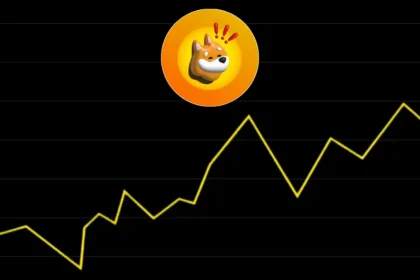Co-founder of Ethereum, Vitalik Buterin finds himself in the headlines this week while defending mounting criticisms of Ethereum and its related foundation. X (Twitter) followers for Buterin have skyrocketed as he narrowly gets a hold of the share for “KOL mindshare” for the week – more about that shortly. His vocal defence of Ethereum and its roadmap puts him well ahead of other influential voices in the crypto space, not least Mert Mumtaz, CEO of Helius Labs.

Data from Kaito AI, shared with everyone by crypto show host Andy on The Rollup, shows that Vitalik Buterin has taken an impressive 1.69% share of KOL mindshare in the past week, thereby becoming one of the most talked about in crypto on X after their increased activities. A large part of this relates to growing FUDs going around that criticize the poor price performance of the blockchain and also the questionable judgments of the Ethereum Foundation itself when it comes to money matters.
Defending the Ethereum Foundation’s Ether Sales

He took to X and posted an in-depth explanation of his stand as he defended the Ethereum Foundation for selling Ether (ETH). According to him, paying developers and researchers working on the Ethereum network is required to sell ETH. For the infrastructure of Ethereum, funds are allocated towards making sure that the transactions get confirmed in under 30 seconds, with minimal fees. The funds also support the integration of advanced privacy features such as zero-knowledge proofs that enhance the anonymity and security of transactions. Thanks to all these, according to Vitalik Buterin, the Ethereum blockchain has been running nonstop without any shutdown since 2016.
Why Doesn’t the Ethereum Foundation Stake its Ether?
The other severe criticism that was thrown towards the Ethereum Foundation is that it does not stake its ETH reserves but instead sells it to the open market. When the foundation locks up a portion of Ether in its proof-of-stake PoS system, it locks up that amount and accumulates a part of the revenue as a reward, thus decreasing the requirement for selling it into the market. But for staking all the reserved Ether by the foundation was challenging due to a difficult hard fork.
By selling Ether, the Foundation avoids such divisive moments and is exempted from taking an official stance. Vitalik Buterin states that the Foundation is “exploring other ways to incentivize engagement with staking” which includes issuing of grants in staked ETH, and recipients will not be in charge of handling their own withdrawal timelines when reaping staking benefits. Apart from allocating staked ETH grants, Buterin says the Foundation is looking at delegating some of its rights to stake on other parties. This, therefore, could de-centralize staking any further and remove some concerns about centralization within the governance of Ethereum.
Growing Criticism and Ethereum’s Layer-2 Strategy

Despite Vitalik Buterin’s explanations concerning the financial strategy of the Ethereum Foundation, negative feelings and sentiments regarding Ethereum keep surfacing. Much of these criticisms arise from Ether’s pretty poor price performance as a cryptocurrency, especially compared with Bitcoin (BTC) or Solana (SOL). The focus of layer-2 scaling solutions adopted by Ethereum has led some to be concerned with low revenues on the base layers of the blockchain.
The layer-2 strategy, as implemented by Ethereum, is meant to decongest the main network and lower transaction costs. However, critics argue that this strategy has led to reduced activity and fees on Ethereum’s base layer, and this may jeopardize its long-term sustainability. During the growing criticism, Vitalik Buterin has been doubling down on Ethereum’s technical roadmap. He gives his insights on the phases of development for Ethereum ahead, which he terms “Merge,” “Surge,” “Scourge,” “Verge,” and “Purge.” All these are toward strengthening the scalability, security, and sustainability of Ethereum.
Recent days witness a gaining influence in X of the person -Vitalik Buterin-that actually represents that he strongly cares for the future of Ethereum. It was evident when he showed his eagerness to clarify the stand from direct-answer critics that might rise before him due to the actions the Ethereum Foundation shows, so long as he had a vision for its full potential. By continuing to advance the technical roadmap of Ethereum and push innovation, he wants the propaganda about price apprehension to be shifted toward a much broader vision of Ethereum as a decentralized, scalable network.
Stay connected with TheBit Journal by following us on Twitter and LinkedIn, and join our Telegram channel for more news.





























